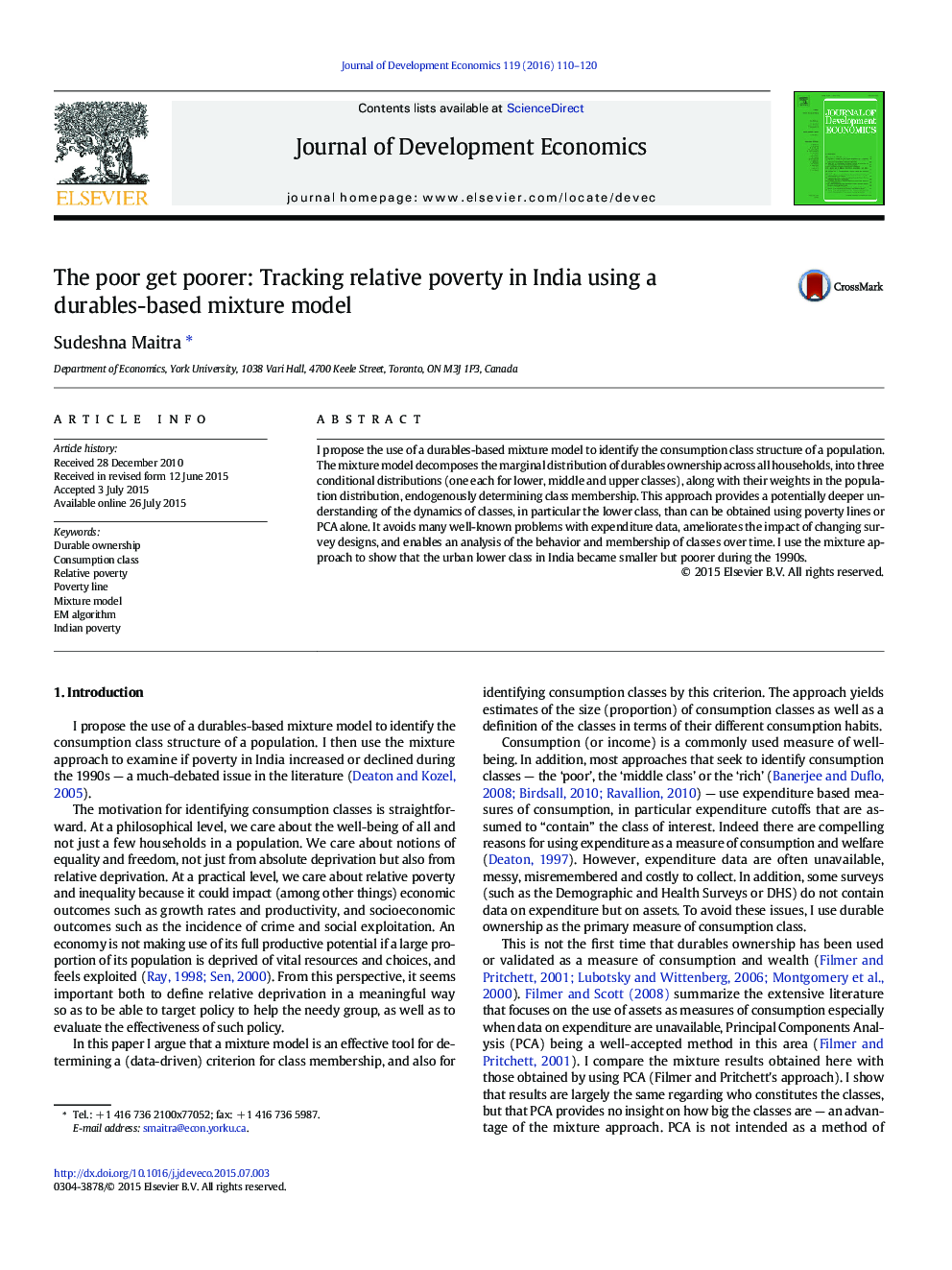| کد مقاله | کد نشریه | سال انتشار | مقاله انگلیسی | نسخه تمام متن |
|---|---|---|---|---|
| 5094351 | 1478492 | 2016 | 11 صفحه PDF | دانلود رایگان |
- I propose using a mixture model of durables ownership to identify three classes.
- The mixture model endogenously determines criteria for class membership.
- I show the mixture model identifies classes comparable to those obtained using PCA.
- I find relative poverty in urban India - the lower class - fell in the 1990s.
- I find the lower class while smaller in 1999 is poorer in durables ownership.
I propose the use of a durables-based mixture model to identify the consumption class structure of a population. The mixture model decomposes the marginal distribution of durables ownership across all households, into three conditional distributions (one each for lower, middle and upper classes), along with their weights in the population distribution, endogenously determining class membership. This approach provides a potentially deeper understanding of the dynamics of classes, in particular the lower class, than can be obtained using poverty lines or PCA alone. It avoids many well-known problems with expenditure data, ameliorates the impact of changing survey designs, and enables an analysis of the behavior and membership of classes over time. I use the mixture approach to show that the urban lower class in India became smaller but poorer during the 1990s.
Journal: Journal of Development Economics - Volume 119, March 2016, Pages 110-120
